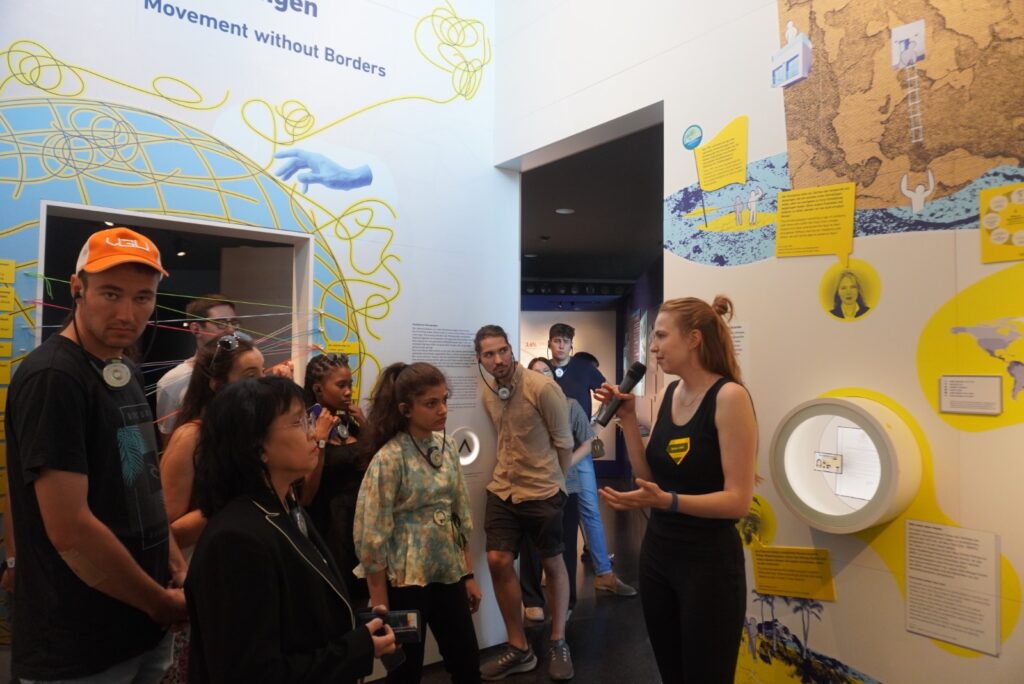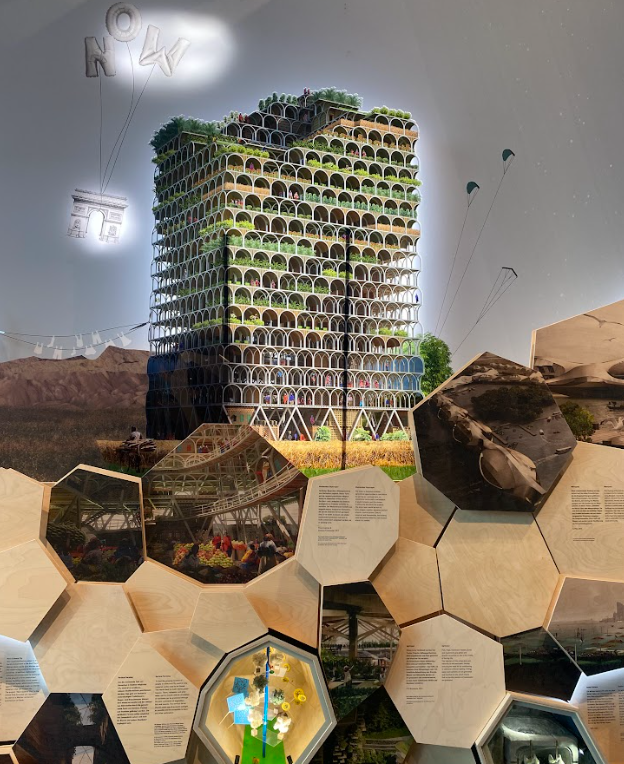By Erika Laursen and Ha Gia Bao
How do we want to live when the possible future is the consequence of our decisions and actions? In the endless possibilities for the future, which one will we hold on to?

On the first day of the Transcultural Caravan research trip to Berlin, we started with a visit to the Futurium Museum. Standing as a testament to human ingenuity and curiosity about what the future might hold, the museum is a beacon of modernity, seamlessly blending art, science, and technology to cultivate a unique platform for exploring all of these. With three expositions: Technology, Humans, and Nature, this architectural masterpiece was designed to inspire, educate, and challenge visitors to envision a better world through sustainable, innovative, and inclusive practices. The most vital section for the Transcultural Caravan group was the one about Nature since everything exhibited is the vision of a more sustainable tomorrow.
The exhibition explains the impact of human beings on nature and how to mitigate damage by using new kinds of material for construction and recycling resources. The central object of the exhibition is a wooden sculpture that assembles the appearance of tiny organisms called the “Neo-nature”. The model is intended to represent a new insight into ecosystems which, on the one hand, considers the mechanization of nature and human intervention in nature, but at the same time takes nature and its effective solution as a model. The interactive tables show the importance of recycling and upcycling materials, and the possibilities of new natural materials such as mushrooms, algae, and others. The pandemic issues related to human occupation of natural spaces, new ways of construction, and the differences between spread and concentrated cities, and explaining clean energy sources are also examined.

The interesting part of the exhibition is the projects and the proposals shown on the right side of the room of Nature. Some of them are designed to illustrate citizens’ opinions on their vision of life based on principles of nature. The idea is to create buildings that adapt to future conditions by utilizing natural materials such as bamboo, straw, wicker, clay or stone. This approach will also insulate the buildings to create a comfortable environment that harmonizes the lives of humans and animals. Marine lives are also considered since the “Oyster-tecture”, and “Sea Tree” projects create the landscape mosaic that benefits the communities of fish, bivalves, and shellfish as well as coral reefs. Other sustainable approaches such as the “Hydroelectric Tidal House” and the “Leben auf offenen Meer” (Living on the Open Sea) look at creating artificial islands that enable humans to live free in times of climate change since energy is gained from the sun, wind, tidal waves, and drinking water is converted from saltwater.
The Futurium holds the mission to present people with every prospective future of how human beings might work and live. It reminds us that the power to shape our destiny lies within our minds. By nurturing our imagination, we can shape a brighter, more inclusive tomorrow. Rather than fearing the unknown, the exhibits celebrated the possibilities that arise from uncertainty. They encouraged us to be comfortable with ambiguity and view it as an opportunity to explore new frontiers and push the boundaries of human knowledge. It is not only a museum to present beautiful crafts and ideas but also an international forum to discuss upcoming prospects. It serves as a connection to encourage every individual on the planet to think of the future. The future of human beings is not the sole responsibility of any one country or person. It is a global one.
Special thanks to the Futurium Museum for an unforgettable experience.
